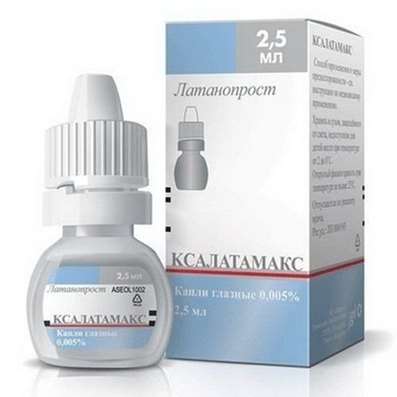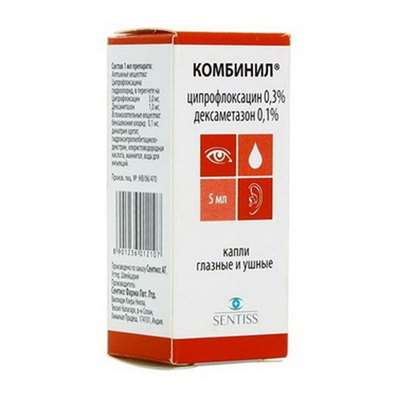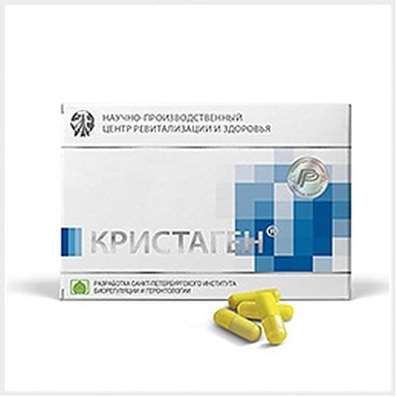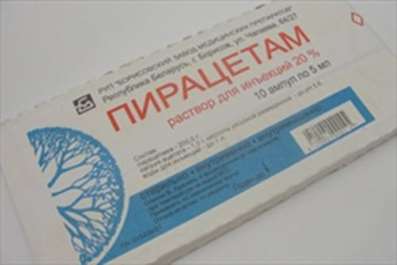Instruction for use: Lidocain
I want this, give me price
Dosage form: substance powder
Active substance: Lidocaine
ATX
D04AB01 Lidocain
Pharmacological group:
Local irritants
The nosological classification (ICD-10)
K94 * Diagnosis of digestive tract diseases: Hepatic and splenic scans; Visualization of the liver by invasive methods; Isotope scintigrams of the liver; Laparocentesis; Ultrasound examination of the liver; Magnetic resonance imaging of the liver; Computed tomography of the liver; Esophageal Manometry; Anoscopy; Visualization of the biliary tract; Ultrasonic visualization of the liver; Gastroscopy; Intestinal degassing before diagnostic tests; Degassing of the intestine before X-ray examination; Gastrointestinal diagnostics; Diagnosis of bleeding from the small intestine; Diagnosis of focal pathology of the liver; Diagnosis of secretory ability and acid-forming function of the stomach; Diagnostic intervention on the large intestine; Duodenal sounding; Duodenoscopy; Instrumental studies of the abdominal cavity organs; Intraoperative cholangiography; Irrigoscopy; Examination of gastric secretion; Gastrointestinal; Study of acid-forming function of the stomach; Study of the secretory function of the stomach; Colonoscopy; Controlling the effectiveness of lithotripsy; Determination of the degree of hypersecretion in duodenal ulcer; Preparation for diagnostic tests; Preparation for X-ray and instrumental methods of abdominal examination; Preparation for X-ray and ultrasound examination of abdominal organs; Preparation for X-ray or endoscopic examination of the digestive tract; Preparation for X-ray examination of the gastrointestinal tract with contrasting; Preparation for roentgenological examination of gastrointestinal tract with application of barium; Preparation for X-ray examination and ultrasound of the abdominal cavity organs; Preparation for X-ray examination or ultrasound of the abdominal cavity organs; Preparation for ultrasound and X-ray examination of the abdominal cavity organs; Preparation for endoscopic examination of the lower parts of the colon; Preparation for endoscopic or roentgenologic examination of the lower intestine; Preparation of the lower GI tract for endoscopy; Preparation of the colon for instrumental and radiographic examinations; Preparation of the colon for X-ray and endoscopy; Recto-Humanoscopy; Rectoscopy; Radiography of the digestive tract; X-ray diagnosis of achalasia of the esophagus; X-ray diagnosis of diseases of the digestive tract; X-ray diagnostics of the digestive tract; Radiocontrast examination of bile ducts Radiocontrast study of the digestive tract; Radiographic diagnosis of gastrointestinal tract; X-ray examinations of the digestive tract; X-ray examination of the duodenum and gallbladder; X-ray examination of the stomach; X-ray examination of the biliary tract and gallbladder; X-ray examination of the digestive tract; X-ray examination of the esophagus; Retrograde cholangiopancreatography; Retrograde endoscopic pancreatocholangiorentgenography; Sonography of the gastrointestinal tract; Splenoportography; Ultrasound of the abdominal cavity organs; Functional X-ray diagnosis in diseases of the stomach; Functional X-ray diagnosis in diseases of the intestine; Cholangiography; Cholangiography in cholelithiasis; Cholangiopancreatography; Cholecystography; Esophagoscopy; Endoscopic retrograde pancreatography; Endoscopic retrograde cholangiopancreatography; Endoscopic interventions; Endoscopic examination of the digestive system; Endoscopic examination of the lower parts of the large intestine; Endoscopic examination of the digestive tract; Endoscopy; ERCPR; Panendoscopy
L55 Sunburn: Sunburn
T14.1 Open wound of unspecified body region: Secondary healing processes; Sluggishly granulating wounds; Sluggishly healing wounds; Slow-healing wounds; Deep Wounds; Purulent wound; Granulating wounds; Prolonged non-healing wound; Long-lasting non-healing wound and ulcer; Long-lasting non-healing soft tissue wound; Healing of wounds; Wound healing; Capillary bleeding from superficial wounds; Bleeding wound; Radiation Wounds; Slowly epithelializing wounds; Minor cuts; Suppurated wounds; Violation of wound healing processes; Breach of skin integrity; Breach of the integrity of the skin; Violations of the integrity of the skin; Minor cuts; Uninfected wounds; Uncomplicated wounds; Operating wound; Primary treatment of surface contaminated wounds; Primary wound treatment; Primary-delayed treatment of wounds; Poorly cicatrizing wound; Poor wound healing; Bad wound; Superficial injury; Superficial wound with mild exudation; Wound; The wound is large; Bite wound; Wound process; Wounds; Wound healing wounds; Stump Wounds; Wounds for gunshot; Wounds with deep cavities; Difficult healing wounds; Difficult wounds; Chronic Wounds
T30 Thermal and chemical burns of unspecified site: Pain syndrome with burns; Pain in burns; Pain with burns; Sluggishly healing post-burn wounds; Deep burns with a wet scab; Deep burns with abundant compartments; Deep burn; Laser burn; Burn; Burn of the rectum and perineum; Burn with mild exudation; Burn disease; Burn injury; Superficial burn; Superficial burn of I and II degree; Superficial skin burns; After-burn trophic ulcer and wound; Post-burn complication; Loss of fluid for burns; Sepsis burn; Thermal burns; Thermal skin lesions; Thermal burn; Trophic after-burn ulcers; Chemical burn; Surgical burn
Z100.0 * Anesthesiology and premedication: Abdominal surgery; Adenomectomy; Amputation; Angioplasty of the coronary arteries; Carotid artery angioplasty; Antiseptic treatment of skin in wounds; Antiseptic treatment of hands; Appendectomy; Atheroctomy; Balloon coronary angioplasty; Vaginal hysterectomy; Venous bypass; Interventions on the vagina and cervix; Interventions on the bladder; Interference in the oral cavity; Reconstructive-reconstructive operations; Hand hygiene of medical personnel; Gynecological Surgery; Gynecological interventions; Gynecological operations; Hypovolemic shock during surgery; Disinfection of purulent wounds; Disinfection of the edges of wounds; Diagnostic Interventions; Diagnostic procedures; Diathermocoagulation of the cervix; Long-term surgeries; Replacement of fistulous catheters; Infection in orthopedic surgical interventions; Artificial heart valve; Kistectomy; Short-term outpatient surgery; Short-term operations; Short-term surgical procedures; Cryotyreotomy; Blood loss during surgical interventions; Bleeding during surgery and in the postoperative period; Kuldotsentez; Laser coagulation; Laserocoagulation; Laser retinopathy of the retina; Laparoscopy; Laparoscopy in gynecology; Likvornaya fistula; Small gynecological operations; Small surgical interventions; Mastectomy and subsequent plastic surgery; Mediastinotomy; Microsurgical operations on the ear; Mukinging operations; Suturing; Minor surgery; Neurosurgical operation; Eclipse of the eyeball in ophthalmic surgery Orchiectomy; Pancreatectomy; Pericardectomy; The rehabilitation period after surgical operations; Reconvalence after surgical intervention; Percutaneous transluminal coronary angioplasty; Pleural Thoracocentesis; Pneumonia postoperative and post traumatic; Preparing for surgical procedures; Preparing for a surgical operation; Preparation of the surgeon's arms before surgery; Preparation of the colon for surgical interventions; Postoperative aspiration pneumonia in neurosurgical and thoracic operations; Postoperative nausea; Postoperative hemorrhage; Postoperative granuloma; Postoperative shock; Early postoperative period; Myocardial revascularization; Resection of the apex of the tooth root; Resection of the stomach; Bowel resection; Resection of the uterus; Liver resection; Small bowel resection; Resection of a part of the stomach; Reocclusion of the operated vessel; Gluing of tissues during surgical interventions; Suture removal; Condition after eye surgery; Condition after surgery; Condition after surgery in the nasal cavity;Condition after gastrectomy; Condition after resection of the small intestine; Condition after tonsillectomy; Condition after removal of duodenum; Condition after phlebectomy; Vascular Surgery; Splenectomy; Sterilization of surgical instrument; Sterilization of surgical instruments; Sternotomy; Dental surgery; Dental intervention on periodontal tissues; Strumectomy; Tonsillectomy; Thoracic surgery; Total gastrectomy; Transdermal intravascular coronary angioplasty; Transurethral resection; Turbinectomy; Removal of a tooth; Cataract removal; Removing Cysts; Removal of tonsils; Removal of myoma; Removal of mobile milk teeth; Removal of polyps; Removal of a broken tooth; Removal of the uterus; Removal of seams; Urethrotomy; Fistula of the luminal ducts; Frontoetmoidohaimorotomy; Surgical infection; Surgical treatment of chronic ulcers of extremities; Surgery; Surgery in the anus; Surgery on the large intestine; Surgical practice; Surgical procedure; Surgical interventions; Surgical interventions on the digestive tract; Surgical interventions on the urinary tract;Surgical interventions on the urinary system; Surgical interventions on the genitourinary system; Surgical intervention on the heart; Surgical procedures; Surgical operations; Surgical operations on veins; Surgical intervention; Vascular; Cholecystectomy; Partial resection of the stomach; Extraperitoneal hysterectomy; Percutaneous transluminal coronary angioplasty; Percutaneous transluminal angioplasty; Coronary artery bypass grafting; Extirpation of the tooth; Extirpation of infant teeth; Extirpation of pulp; Extracorporeal circulation; Extraction of the tooth; Extraction of teeth; Extraction of cataracts; Electrocoagulation; Endourological interventions; Episiotomy; Ethmoidotomy; Complications after tooth extraction
Z40 Preventive Surgery: Inhalational Anesthesia; Intratracheal Intubation; Intubation of the trachea; Surface anesthesia in ophthalmology
Composition
Spray for topical use dosed 1 fl. (650 doses)
active substance:
lidocaine 3.8 g
auxiliary substances: ethanol (96%) - 27.3 g; propylene glycol 6.82 g; peppermint leaves mint oil - 0.08 g
Pharmachologic effect
Mode of action - local anesthetic.
Dosing and Administration
Locally, externally.
The dose may vary depending on the indications and the size of the zone to be anesthetized. One dose of the spray, released by pressing the dosing valve, contains 4.6 mg of lidocaine. To avoid high concentrations of the drug in the blood plasma should be used at the lowest dose, at which a satisfactory effect is observed. Usually enough 1-2 pressure on the valve, but in obstetric practice, apply 15-20 or more doses (the maximum amount is 40 doses per 70 kg).
Table
Recommended doses for different indications
| Application | Dose (number of valve strokes) |
| Stomatology | 1–3 |
| Surgical stomatology | 1–4 |
| Otorhinolaryngology | 1–4 |
| Endoscopy | 2–3 |
| Obstetrics | 15–20 |
| Gynecology | 4–5 |
| Dermatology | 1–3 |
The drug can also be applied with a cotton swab soaked in it.
Children. When performing dental procedures and operations in children, Lidocaine Spray is preferably used with a cotton swab, which avoids fright when spraying the drug, as well as a tingling sensation (a usual side effect).
Release form
Spray for topical use dosed, 4.6 mg / dose. For 38 g (650 doses) in a bottle of brown glass, with a capacity of 50 ml, equipped with a metering pump with a spray head. 1 f. in a cardboard box.
Conditions of leave from pharmacies
On prescription.
Conditions for storing the drug Lidocain
At a temperature of 15 to 25 ° C.
Keep out of the reach of children.
Shelf life of the drug Lidocain
5 years.
Do not use after the expiry date printed on the package.

 Cart
Cart





